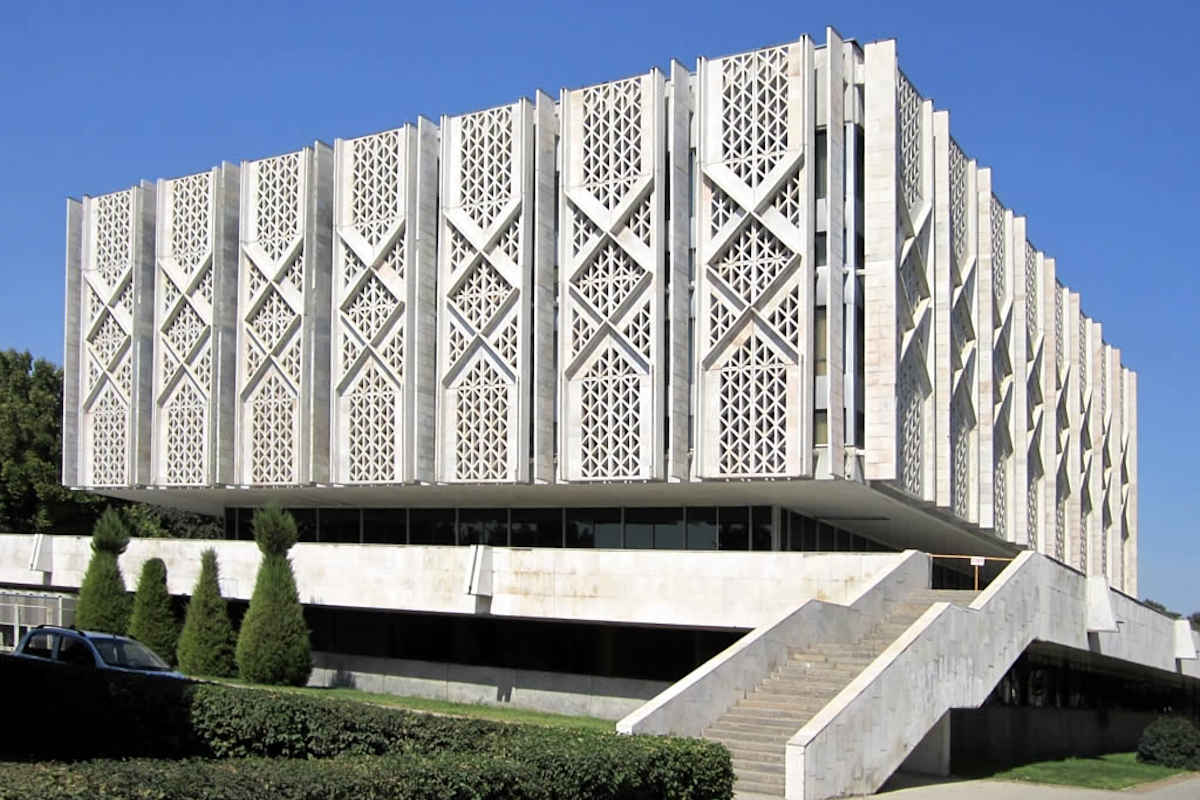Tashkent - Museum of the History of Uzbekistan
The State Museum of the History of Uzbekistan in Tashkent is one of the oldest museums both in the capital and in all of Central Asia. Formerly the Lenin Museum, it dates back to the founding of the Turkestan Folk Museum.
The State Museum of History of Uzbekistan was opened on 12 July 1876 under its original name – Folk Museum of Turkestan, founded at the request of Russian scientists and lovers of natural history, anthropology and ethnography. Over time, the museum steadily increased its main exhibition and took part in many international exhibitions: Paris (1900), Milan (1906) and many others. The Historical Museum of Uzbekistan helped to open historical museums in Samarkand in 1896 and in Fergana in 1899.

In February 1919, the museum was renamed “State Museum of Turkestan” and then changed its name once again to “Main Museum of Central Asia”.
In the XX century, the museum changed its name and location a few more times. Today, the State Museum of History of Uzbekistan is located on Rashidov Avenue in Tashkent, in a building constructed in 1970 specifically for the Lenin Museum.
The exposition of the Museum of the History of Uzbekistan covers the history of the country from ancient times to the present. The structure of the museum’s exposition was created on the principle of continuity and progression of history and culture on the territory of Uzbekistan from ancient times to the present. The exhibitions tell about the role and place of the cultural heritage created here in the history of world civilisation.
The aim of the museum exposition is to show visitors the regularities and peculiarities of the historical development of Uzbekistan, the greatness of the country’s history through objects of material, artistic and spiritual culture: various tools, tableware, mirrors made of copper, jewellery and cosmetics. The exhibition was created on the basis of global criteria of historical science, but taking into account the regularities and peculiarities of the history of Uzbekistan itself.
On the ground floor of the museum there is an administrative office, a cinema hall and a conference hall for 50 people, where various scientific conferences and seminars are held. The museum’s exhibits occupy the third and fourth floors of the building. The total exhibition area is 2500 square metres. The number of exhibits exceeds 10 thousand and the number of objects up to 250 thousand.
Some of the most famous exhibits of the Museum of the History of Uzbekistan are the impressive bronze Sak-kettle made in IV-V century BC and the sculpture of Buddha with two monks, called “Triad”, made approximately in I century AD and found by archaeologists during excavations in the Surkhandarya region of Uzbekistan. The museum also exhibits samples of ancient ceramics and fabrics, and a rather large collection of ancient coins, as well as rare archival materials and handwritten documents, historical papers and photographs.
Besides the various historical treasures of Uzbekistan, the museum is also proud of the country’s modern heroes – champions in freestyle wrestling, kurash, tennis and record holders in mountaineering who conquered Mount Everest in 1998.
In designing the exposition, a wide and varied use was made of complexes of archaeological finds, ethnographic material, coins, written sources, photographs. The exposition of the State Museum of History of Uzbekistan is constantly changing, being improved and supplemented with new exhibits, often creating new departments and exhibitions.
In August 2011, for the first time in the history of all museums of Uzbekistan, the State Museum of History of the Uzbek Academy of Sciences opened a children’s museum called “In the World of Wonders”. This museum is intended for children aged 4 to 14.
The main goal of the Children’s Museum is to help children develop and enrich their knowledge of history through non-traditional, interesting and child-friendly programmes and exhibitions, as well as to show and demonstrate their skills and abilities in practice.
In archaeology, they have the opportunity to conduct archaeological excavations using the example of the ancient monument “Kampirtepa on a small clay soil”. In the “Numismatics” section you will study the history and value of coins of the different historical periods. In the section “Pottery” you can learn about the history and methods of making national pottery. In the “Embroidery” section you will learn how to embroider skullcaps. In the section “Fine Arts” they can not only learn about creating paintings, but also try to create paintings, miniatures and so on. In the section “The Gifts of Uzbekistan”, children learn about the cultivation of various vegetables and fruits, corn, cotton and silkworms in the country.
The Children’s Museum also has a “Puppet Theatre”, which displays an antique collection of traditional costumes and traditional Uzbek puppets collected over 110 years, and allows children to stage plays themselves by choosing their favourite puppet character.
This part of the museum is very important for children to acquire knowledge and practical skills in different aspects of scientific, cultural and economic life, and promotes great love and respect for knowledge, for work and for their homeland.
